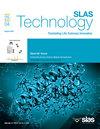Innovations in otolaryngology using LLM for early detection of sleep-disordered breathing
IF 3.7
4区 医学
Q3 BIOCHEMICAL RESEARCH METHODS
引用次数: 0
Abstract
Sleep Disordered Breathing (SDB), including conditions like Obstructive Sleep Apnea (OSA), represents a major health concern, characterized by irregular airflow during sleep due to airway obstruction. SDB can result in serious health problems. Implementation of early intervention is vital whenever patient outcomes are to be considered. This research aims to advance research on otolaryngology using Machine Learning (ML) models, and Large Language Models (LLM) for identification of SDB using Electronic Health Record (HER). The approach proposes a hybrid ML framework combining the Dynamic Seagull Search algorithm-driven Large Language model (DSS-LLM). The extensive clinical dataset is used to train the model. It includes patient demographics, medical history, sleep habits, comorbidities, and physical measurements. Data pre-processing involves handling missing values, applying NLP techniques, and normalization. Feature extraction is done using Principal Component Analysis (PCA) to reduce the dimensionality of the hyperparameters and finally for selecting the best set of predictors. The extracted features are then used to train the proposed DSS-LLM model, which incorporates the DSS algorithm to optimize the LLM classifier, improving classification accuracy and model robustness. Subsequently, the idea of LLM is introduced for its application on textual clinical records comprising physicians' reports and patients’ symptoms. The findings from an experiment suggest that the proposed model enhances the classification accuracy achieved to 98.91 %, precision attained by 98.9 %, recall achieved to 98.92 % and F-1 score attained by 98.58 % as compared to the models developed earlier. This research provides a novel solution to the screening of OSA at the pre-clinical level which involves hybrid machine learning models integrated with LLMs. This proposed framework is expected to boost clinical judgment and thereby increase better ophthalmology outcomes for patients.
耳鼻喉科使用LLM早期检测睡眠呼吸障碍的创新。
睡眠呼吸障碍(SDB),包括阻塞性睡眠呼吸暂停(OSA)等疾病,是一种主要的健康问题,其特征是由于气道阻塞而导致睡眠时气流不规则。SDB会导致严重的健康问题。在考虑患者预后时,早期干预的实施至关重要。本研究旨在利用机器学习(ML)模型和大语言模型(LLM)推进耳鼻喉科的研究,利用电子健康记录(HER)识别SDB。该方法提出了一种结合动态海鸥搜索算法驱动的大语言模型(DSS-LLM)的混合机器学习框架。广泛的临床数据集用于训练模型。它包括患者人口统计、病史、睡眠习惯、合并症和身体测量。数据预处理包括处理缺失值、应用NLP技术和规范化。使用主成分分析(PCA)进行特征提取,降低超参数的维数,最终选择最佳预测因子集。然后将提取的特征用于训练提出的DSS-LLM模型,该模型结合DSS算法对LLM分类器进行优化,提高了分类精度和模型的鲁棒性。随后,引入了法学硕士的思想,将其应用于由医生报告和患者症状组成的文本临床记录。实验结果表明,与已有模型相比,该模型的分类准确率提高了98.91%,准确率提高了98.9%,召回率提高了98.92%,F-1分数提高了98.58%。本研究为临床前OSA筛查提供了一种新的解决方案,该解决方案涉及与llm相结合的混合机器学习模型。这一提出的框架有望提高临床判断,从而为患者增加更好的眼科结果。
本文章由计算机程序翻译,如有差异,请以英文原文为准。
求助全文
约1分钟内获得全文
求助全文
来源期刊

SLAS Technology
Computer Science-Computer Science Applications
CiteScore
6.30
自引率
7.40%
发文量
47
审稿时长
106 days
期刊介绍:
SLAS Technology emphasizes scientific and technical advances that enable and improve life sciences research and development; drug-delivery; diagnostics; biomedical and molecular imaging; and personalized and precision medicine. This includes high-throughput and other laboratory automation technologies; micro/nanotechnologies; analytical, separation and quantitative techniques; synthetic chemistry and biology; informatics (data analysis, statistics, bio, genomic and chemoinformatics); and more.
 求助内容:
求助内容: 应助结果提醒方式:
应助结果提醒方式:


